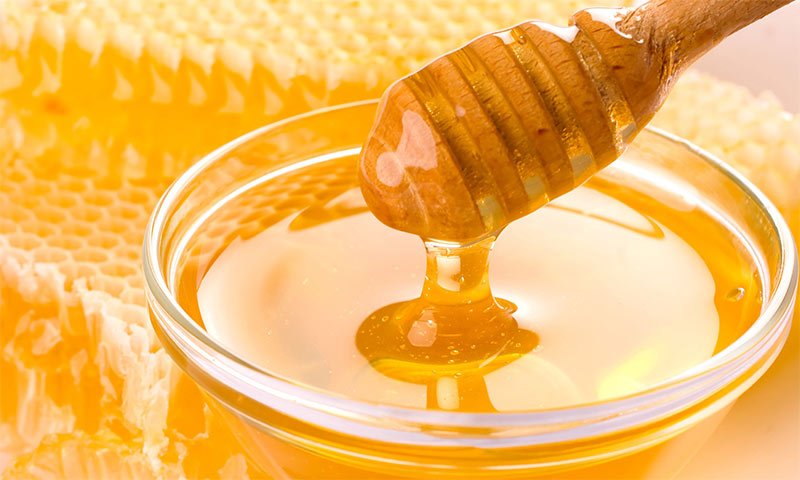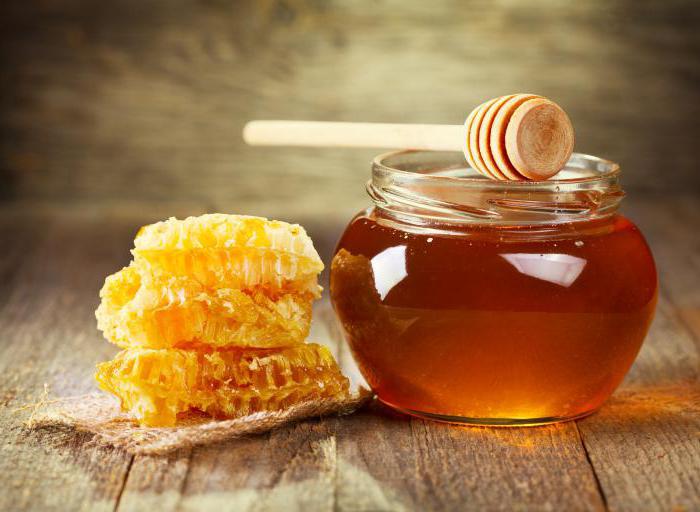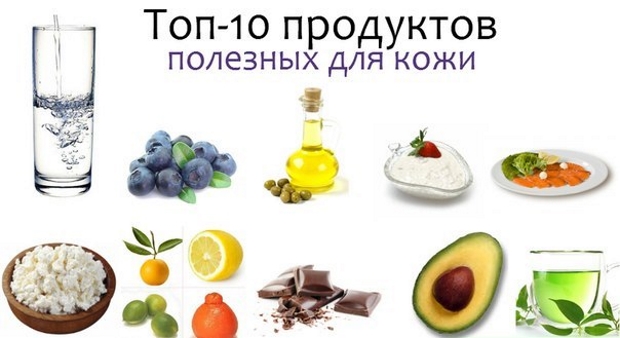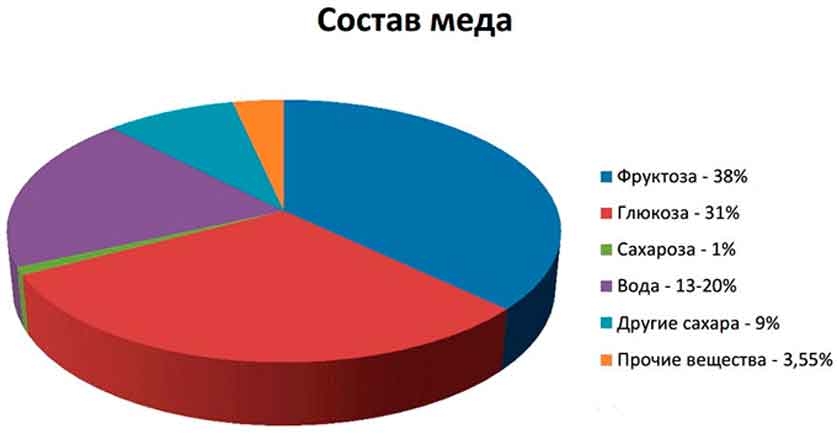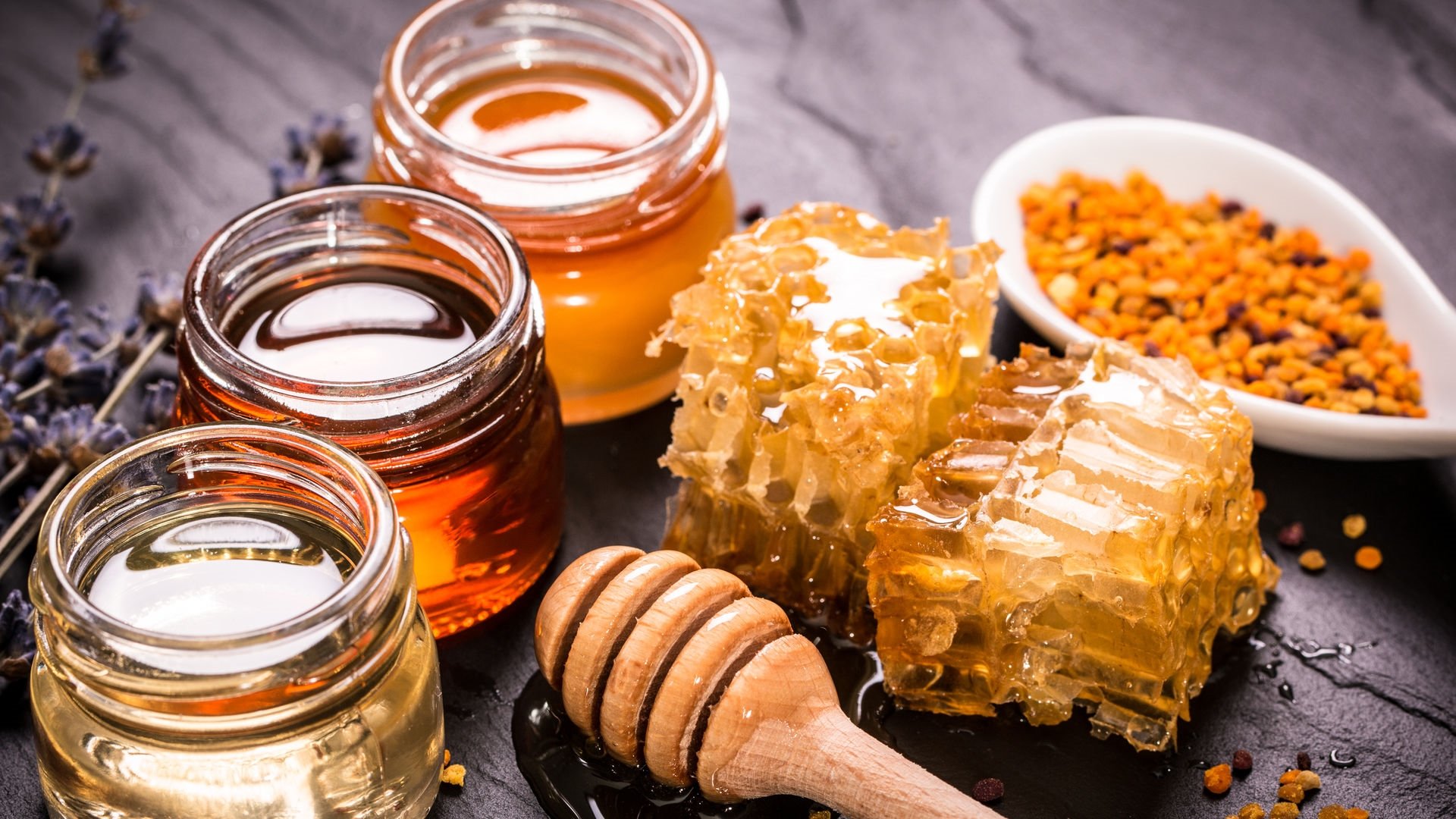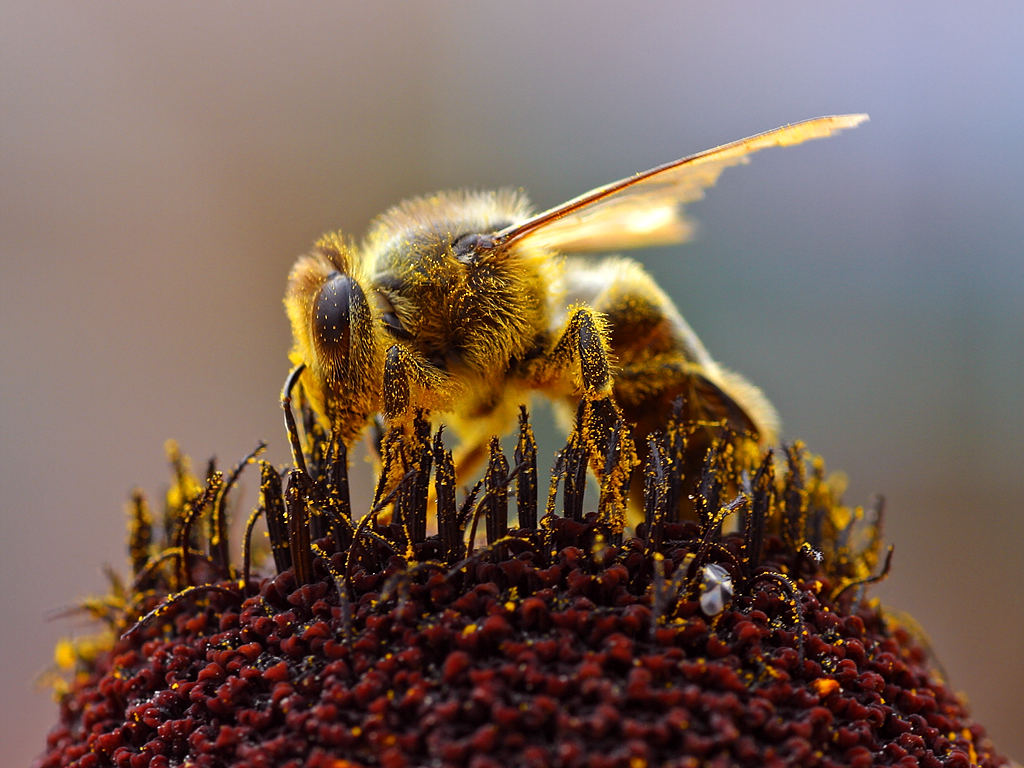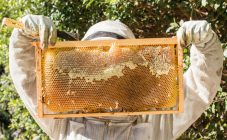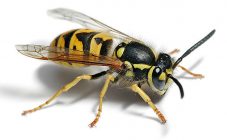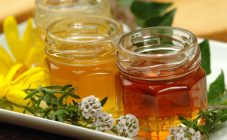Content:
Honey is an amazing product that insects produce for humans. Above the answer to the question "what does honey consist of?" many scientists worked. Information about the composition of a healthy delicacy is fraught with a lot of interesting things. For example, if you understand the substances that make up bee nectar, you can find out why the sweetness from bees is so healing, and why it is well absorbed by the human body.
Composition of the product
The composition of honey is rather unusual. In general, this viscous aromatic mass consists of an aqueous component and dry substances. The water content in honey is 18-21%. Dry substances (compounds and elements) - about three hundred types. For the convenience of studying the content of honey, scientists have divided all substances useful for the human body into groups.
Among the main groups:
- Organic and inorganic acids;
- Carbohydrates;
- Proteins;
- Amino acids;
- Minerals (trace elements and macronutrients);
- Vitamins, etc.
Physical and organoleptic properties
Before moving on to the question "what is honey made of?", It is recommended to get acquainted with its properties. It is the organoleptic that helps to check the sweetness for naturalness.
Among the main properties are:
- Color and shade;
- Smell;
- Taste indicators;
- Consistency.
Color
The color, depending on the plants from which the nectar was collected, varies from light (like birch sap), yellow, amber, light brown to chocolate, dark amber with a light green tint. Despite the wide range of colors, a quality product is always transparent. Exceptions include bee sweetness derived from acacia. It is often unclear.
Smell
Both an increased odority and a delicate fragrant floral aroma or no smell by 80% are allowed. A natural product does not have a pungent odor.
Taste characteristic
The chemical formula of honey is best demonstrated organoleptically through taste. Due to its high sugar content, it has a rich sweet taste with a pungent acidity (due to organic acids). The natural sweetness causes some sore throat. The presence of a bitter taste or pronounced acid in honey is unacceptable.
Consistency
The consistency of the fresh product is creamy, viscous, slightly viscous. After 60 days, the honey begins to sugar and look crystallized.
Organic and inorganic acids
Due to the presence of acids, bee nectar has bactericidal properties. It boosts immunity and kills pathogens. Inorganic acids (hydrogen chloride and phosphoric acid) are present in a modest amount (0.03%). But organic matter is 0.1%.
Representatives of organic acids in honey:
- Dairy;
- Apple;
- Lemon;
- Sorrel;
- Wine;
- Formic;
- Gluconovaya, etc.
Carbohydrates in chemical composition
What's in honey? The chemical composition is based on the carbon group. It's sugar. Their number in different varieties ranges from 76% to 85%. Groups of scientists are still working on some of the compounds. Most of all in the composition of dextrose (glucose) and levulose (fructose). The approximate percentage of monosaccharides in the main beekeeping product is 33% and 36%, respectively. These forms of carbohydrates provide people with energy and improve performance.
There are other sugars in sweets:
- Maltose;
- Sucrose;
- Disaccharides;
- Dextrins;
- Pentosans, etc.
Proteins and amino acids
Many people with a sweet tooth are interested in "is there protein in honey?" These nitrogenous substances are present there. Although their share is very small (about 0.4-1.5%). Most of the protein elements are enzymes or enzymes that accelerate chemical reactions. The most constant enzymes in the sweet mass: catalase, phospholipase, lipase, invertase, protease, amylase.
Almost all amino acids known to mankind are found in bee treats. These chemical units have a beneficial effect on metabolic processes in the body, growth.
Valuable minerals
What does honey contain from minerals? Minerals, namely microelements and macronutrients that make up the chemical composition of the product, are a list of 37 substances. The product is considered one of the richest in these useful elements. Due to the content of minerals, sweetness has a positive effect on hematopoiesis, the nervous system, general well-being, and efficiency. They also strengthen bones and give people longevity.
Most of all in the product is potassium. The potassium content of honey is one third of the total amount of all minerals. This property is used when recommending sweetness to people in need of this element.
Some minerals and their approximate amount per 100 g of honey
| Substance | ml | mcg |
|---|---|---|
| Potassium | 36 | |
| Chlorine | 20 | |
| Sodium | 10 | |
| Phosphorus | 18 | |
| Magnesium | 4 | |
| Sulfur | 1 | |
| Fluorine | 100 | |
| Iron | 700 | |
| Zinc | 100 | |
| Copper | 61 | |
| Manganese | 30 | |
| Iodine | 3 | |
| Cobalt | 0.5 |
The sweetness from bees is so well absorbed by the human body precisely because of the abundance of minerals. The fact is that the content of these substances in honey is similar to their content in blood plasma.
Toxins and contaminants
What does honey contain, in addition to useful compounds and elements? There is a small dose of pollen, natural antibiotics (phytoncides), some beneficial hormones, essential oils, etc. Toxins and pollutants can also get into the product.
Dangerous elements are carried by bees from fields that have been sprayed with pesticides. Insects can deliver pollen from poisonous plants to the combs. Such plants include the Pontic Rhododendron shrub. Its flowers contain a toxic substance that causes disorders of the nervous system.
The likelihood of contamination entering the product increases if the gardener used substandard toxic materials to build the hives. Another problem when honey can be dangerous is the presence of antibiotic agents in it. Antibiotics are used by beekeepers themselves to protect hardworking pets from disease.
The composition of natural honey is striking in its complexity and perfection. This healthy product is recommended for both adults and children. But it should be understood that even the purest and most natural product can cause poisoning and allergies. To do this, you need to eat a large amount of goodies. How much honey is allowed per day? The maximum dose is 90-130 g. Best of all, it is absorbed and heals the body when consumed 1-2 tablespoons a day.
